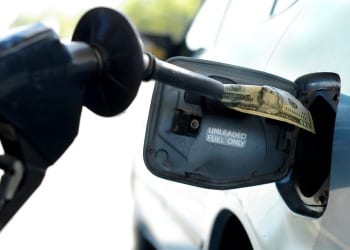In the past three years the average retail price of gas in the U.S. has increased by 131%, according to GasBuddy.com. Keeping your fleet’s fuel consumption down — while maintaining response times and deliver rates — is an important element of your business’s financial strategy.
There are three features of your GPS fleet tracking software that can help you reduce your vehicles’ gas costs: speeding alerts, idling reports, and routing.
Speeding Alerts
According to the EPA, gas mileage decreases rapidly once a vehicle has passed 50 mph. They estimate that you pay 20 to 24 cents more per gallon for every 5 mph a vehicle drives over this limit. Assuming that gas costs $4.00 per gallon, a vehicle driving at 55 mph would be using gas at a rate equivalent to paying $4.20 per gallon. Driving at 65 mph is $4.60 per gallon. When you have a number of vehicles in your fleet, these extra nickels and dimes can add up — and quickly.
- GPS fleet management software tracks the speed of each vehicle, enabling you to determine which drivers waste fuel by driving over the limit.
- In some programs, you can set an alert to notify you or a manager in real time when a vehicle drives over the limit.

Idling Report
Just as the software tracks each vehicle’s speed, it also tracks how often a vehicle is idle. Drivers may leave trucks to idle in a variety of instances: while they are making a delivery, while filling out reports or communicating with managers, while waiting in traffic, and more.
- The EPA claims that idling can waste from a quarter up to a half a gallon of fuel per hour, whereas stopping and restarting the engine costs only a few seconds’ worth of gas.
- Vehicles that have the air conditioner running while idling waste more gas than vehicles that do not.
- When you track how often your vehicles are idle, you can pinpoint the reasons why they are idling and determine ways to reduce those times. This can include training your drivers to turn off the engine during waits longer than 30 seconds, or rewarding those drivers who have the lowest idling times.
Efficient Routing
Efficiently routing your vehicles not only decreases fuel consumption, it also results in faster delivery times and greater productivity per driver. GPS tracking provides dispatchers with the exact location of each vehicle, enabling them to get lost drivers back on track quickly and reroute drivers around road work, traffic jams, and other factors that can cause delays.
- Route tracking, in combination with fuel tracking features, helps you to determine which driving routes are historically most cost-effective in consuming fuel. You can create new routes and test how they affect fuel consumption and delivery times.
- In general, routes that keep vehicles driving at a consistent speed with few stops or traffic lights – such as those that utilize the highway rather than surface roads – are the most economical. However, when highways are moving slowly or completely backed up, the GPS routing software can find another route that is more efficient at that time.
If you want to reduce the amount of fuel that your fleet wastes, you first need to locate how the waste is occurring. The features of your fleet tracking software can determine if your drivers are wasting gas by idling, speeding, or driving the scenic route. With this knowledge, you can then implement changes within your fleet that will effectively reduce your gas costs.
Megan Webb-Morgan is a web content writer for Resource Nation. She writes about small business, focusing on topics such as fleet management. Follow Resource Nation on Facebook and Twitter, too!

I have 5 commercial fleets and looking for how to reduce my fuel cost. After many searches, I got a solution (Renewable Diesel). Can you tell me whether it is effective to reduce fuel cost or not?